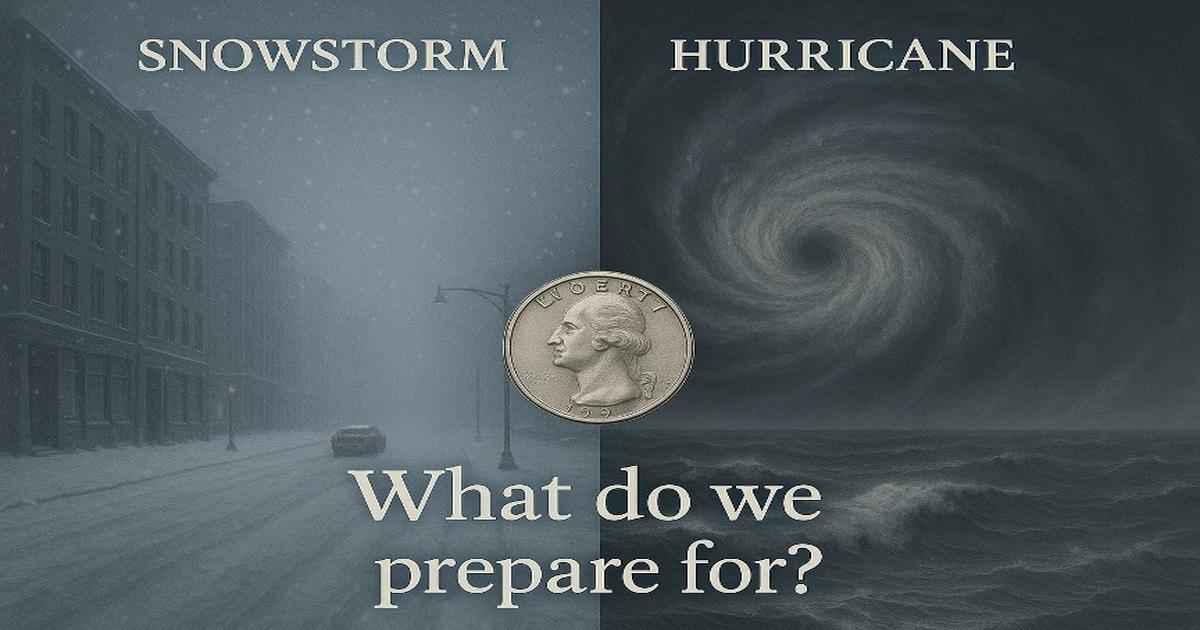
Planning the 2025-26 School Year: Why Data Beats the Farmers’ Almanac
Every August, educators, parents, and community members start looking ahead to the upcoming school year, and for many, that includes a peek at the Farmers’ Almanac to see what kind of winter weather might be in store.
For generations, the Almanac has been a fun, even nostalgic, tradition. There’s a certain charm in reading its poetic predictions about cold snaps and stormy spells. But should we be using it to make real decisions about snow days, hurricane preparedness, or school resources? There is a better way...
The 2025 26 Farmers’ Almanac Winter Forecast
For the 2025 26 school year, the Farmers’ Almanac predicts a mixed bag of cold temperatures, bouts of snow in the northern states, and an active hurricane season in the Southeast. It warns of an early winter chill and several notable storms, along with wetter-than-average conditions for some coastal areas.
It’s entertaining to imagine planning the year around these forecasts. Schools could stockpile ice melt early, adjust the academic calendar in anticipation of snow days, or even brace for hurricane evacuations well before official advisories. After all, that’s how it’s been done in some districts for decades. Look at the Almanac, circle a few dates, and brace for what’s coming.
The Problem: No Better Than a Coin Toss
As much as we enjoy the tradition, multiple independent studies have shown that the Farmers’ Almanac’s accuracy hovers around 50 to 52% about the same as flipping a coin. A University of Illinois study and a five-year analysis by meteorologist John Walsh both found that temperature and precipitation forecasts from the Almanac are barely better than random guesses.
That’s fine if we’re talking about friendly bets with colleagues or using it as a conversation starter in the staff lounge. However, when it comes to allocating school budgets, determining how much salt to purchase for ice, or preparing for weather-related closures, relying on a coin toss isn’t sufficient.
The Better Option: Modern Meteorological Models
Today, we have access to incredibly sophisticated, scientifically robust weather prediction models. These models use satellite data, ocean temperature readings, atmospheric pressure trends, and decades of historical records to forecast weather with far greater accuracy than the Almanac’s traditional formula.
For example, schools in snow-prone regions can use NOAA’s seasonal outlooks to estimate the likelihood of above-average snowfall. Coastal schools can track hurricane season risk levels and even model evacuation timelines based on storm surge predictions. This enables smarter resource allocation, purchasing the optimal amount of salt, planning maintenance schedules, and ensuring transportation readiness.
Beyond Weather: Using Data for Academic Planning
The lesson here isn’t just about weather. It’s about how we make decisions for the entire school year. Too often, we rely on the way things have always been done, gut feelings, traditions, or outdated information to set academic goals and operational plans.
But just like with weather, we now have powerful tools to project where student achievement is headed and what actions can alter that trajectory. AI-driven analytics can help identify students at risk of falling behind, predict test score trends, and recommend targeted interventions months in advance. Instead of waiting to see what happens, educators can make proactive, data-informed decisions that change outcomes.
The Bottom Line
The Farmers’ Almanac will always have its place in our cultural fabric. It’s a fun, folksy way to think about the seasons ahead. But for critical school planning, whether for weather-related closures or academic improvement, modern data analysis wins every time. As we head into the 2025 26 school year, let’s enjoy the Almanac for what it is, but make our real decisions using the best tools and science available.
Because when it comes to shaping the future of our schools, we can’t afford to flip a coin. We shape the trajectory of people's lives!

.png?width=1000&height=199&name=SG-Logo3-Transparent-1000x199px%20(1).png)

.jpg?width=100&height=100&name=elementary%20student%20squeezing%20a%20stuffed%20animal%20while%20holding%20their%20breath%20(1).jpg)


